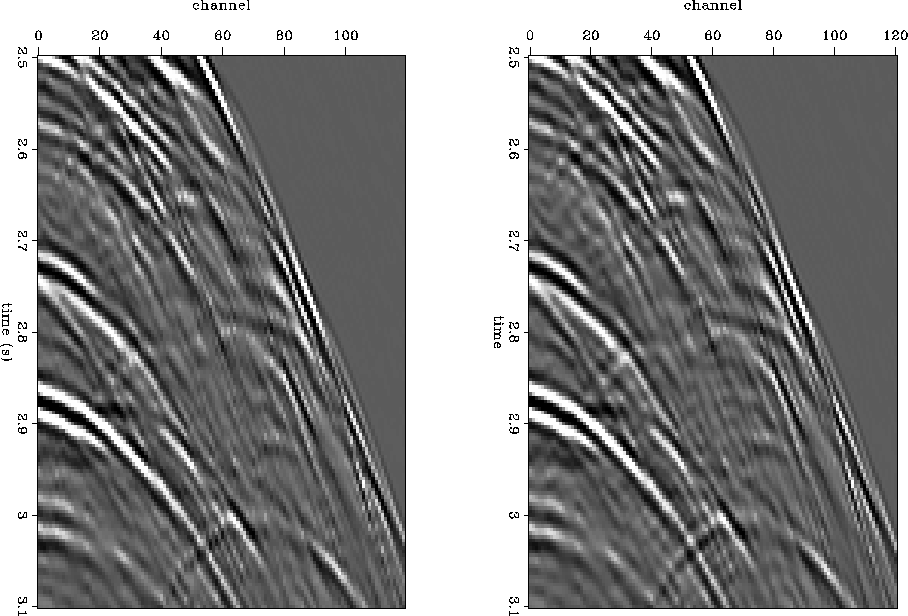 |
Figure 3 Comparison of interpolation results using isotropic and radial filter smoothing. Both results are reasonably good, but the radial smoothing result (right panel) is better where events are flat or dip back towards zero offset.
We chose the radial direction because dip of seismic events is constant along radial lines. But that is only true in ideal circumstances. On radial lines, dip is constant if stacking velocity and geologic dip are constant. Naturally, things are more complicated in real life. Velocity is generally not constant. Multiples and complex structure can introduce all manner of unpredictable dips, in all types of gathers. Nonetheless, radial smoothers work. My experience has been that the radial smoother works as well as or better than an approximately isotropic blob smoother, on common-shot, common-receiver, and CMP gathers. Figure radblob shows an example of an interpolation result using radially-smoothed PEFs to interpolate, and the same result using isotropically smoothed PEFs. The results are similar, but the radially-smoothed PEFs did a better job at interpolating the events dipping back towards zero offset. Inspection of the figures shows that all those events have about the same dip. The isotropic smoother had a similar number of coefficients, but did not do as well. Smoothing in all directions implies smoothing along events where their dip is changing, while smoothing radially implies smoothing along events only where they reach their asymptotes. A PEF can predict more than one dip, but not too many. In the isotropic case, a filter may be averaged over a region containing all manner of dips. For instance, near the apex of a hyperbola there is a range of positive and negative dips. At any rate, it is pleasing that the radial scheme works well.
 |